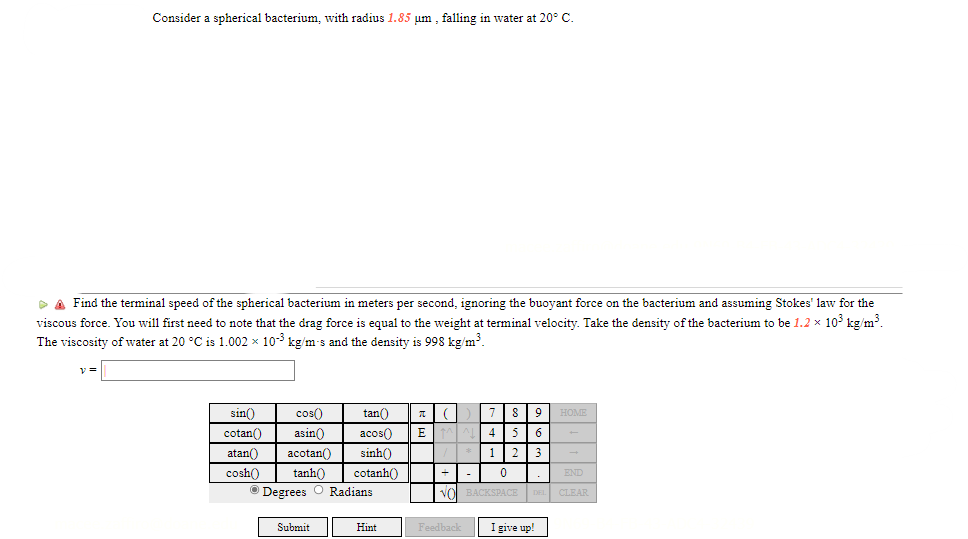Find the terminal speed of the spherical bacterium in meters per second, ignoring the buoyant force on the bacterium and assuming Stokes' law for the viscous force. You will first need to note that the drag force is equal to the weight at terminal velocity. Take the density of the bacterium to be 1.2 × 10³ kg/m³. The viscosity of water at 20 °C is 1.002 x 103 kg/m-s and the density is 998 kg/m³. y =
Fluid Pressure
The term fluid pressure is coined as, the measurement of the force per unit area of a given surface of a closed container. It is a branch of physics that helps to study the properties of fluid under various conditions of force.
Gauge Pressure
Pressure is the physical force acting per unit area on a body; the applied force is perpendicular to the surface of the object per unit area. The air around us at sea level exerts a pressure (atmospheric pressure) of about 14.7 psi but this doesn’t seem to bother anyone as the bodily fluids are constantly pushing outwards with the same force but if one swims down into the ocean a few feet below the surface one can notice the difference, there is increased pressure on the eardrum, this is due to an increase in hydrostatic pressure.

Trending now
This is a popular solution!
Step by step
Solved in 3 steps with 4 images









